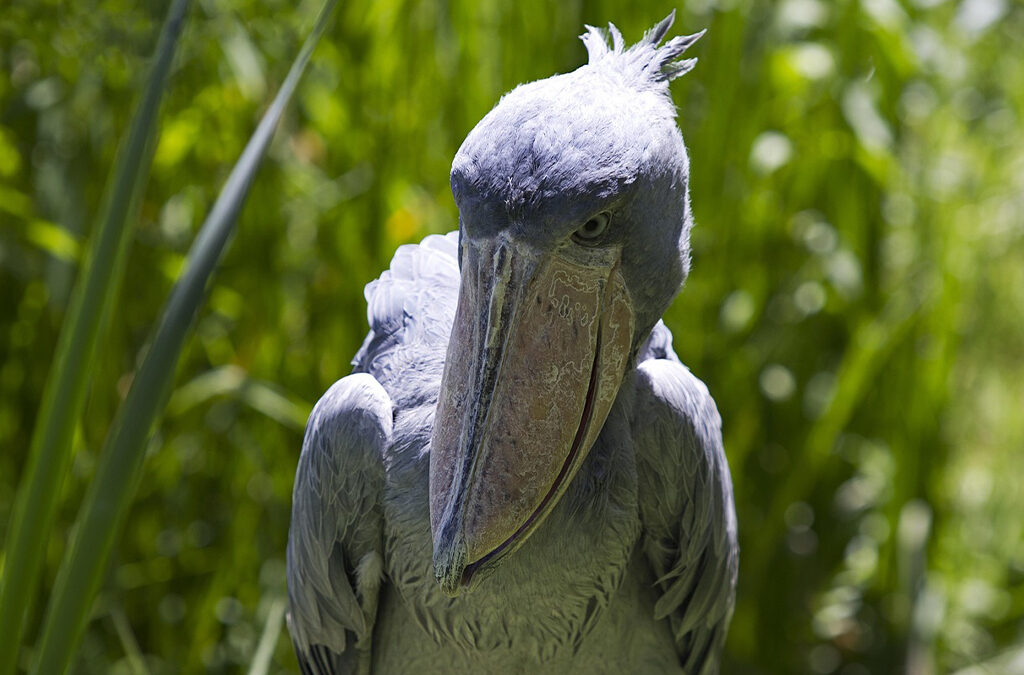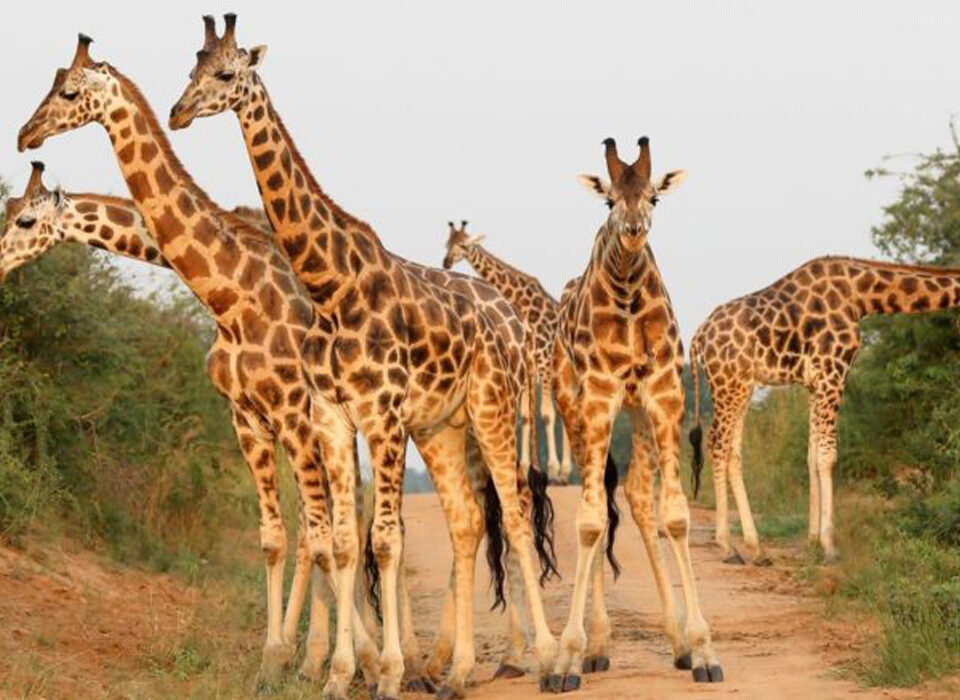
How is Gorilla Tourism Important to Uganda and Rwanda?
July 28, 2025
5 Fascinating Facts About the Ground Hornbill
July 28, 2025Best Time to Spot the Shoebill Stork in Mabamba Swamp

Best Time to Spot the Shoebill Stork in Mabamba Swamp
The best time to see the shoebill stork in Mabamba Swamp is during the dry season. During this time, the shoebills are easier to spot as they come out of the dense swampy vegetation to search for food. Early mornings are particularly ideal, as there is less fishing activity and the water is calmer, making bird spotting and photography easier.
The dry season typically spans June, July, August, September, December, January, and early February. This period offers better visibility, favorable lighting conditions for photography, and easier navigation through the swamp.
About Mabamba Swamp
Mabamba Swamp is located about 12 kilometers from Entebbe and is one of Uganda’s best birding destinations. This swamp was designated as a RAMSAR site in 2006 due to its importance in protecting various bird species, especially the elusive shoebill stork, which feeds on the swamp’s abundant lungfish population.
The narrow paths leading into the swamp are surrounded by unique aquatic plants, enhancing the overall birding experience.
How to Get to Mabamba Swamp for Shoebill Stork Viewing
By Boat:
From Nakiwogo landing site in Entebbe, take a motorboat to Busi Island. From here, a local guide can escort you to Mabamba landing site. This is the shortest and most scenic route.
By Road:
From Kisubi, take the road to Nakawuka and then to Kasenge, eventually arriving at Mabamba Swamp. This route takes about two hours by car.
What Else to See in Mabamba Swamp Besides the Shoebill?
In addition to the shoebill stork, Mabamba Swamp is home to a wide array of birdlife, including:
- Crowned Waxbill
- Double-toothed Barbet
- African Firefinch
- Great White Egrets
- Common Moorhen
- Grey Parrot
- Blue Swallow
- African Marsh Harrier
Where Else to Go Birding in Uganda?
Uganda is a birding paradise, boasting over 1,000 bird species due to its rich diversity of habitats. Other prime birding destinations include:
Murchison Falls National Park
Offers savannah, riverine, and woodland birding. Look out for Blue-bellied Warblers, African Skimmers, Grey Crowned Cranes, and a chance of seeing the shoebill near Nile Safari Camp.
Queen Elizabeth National Park
With over 600 bird species, the park offers birding along the Kazinga Channel, Edward Flats, and crater lakes. Birds include African Fish Eagles, Swamp Flycatchers, and Shoebills in the Kazinga Channel swamps.
Kibale National Park
Known for chimpanzees and forest birds such as the Handsome Francolin, Green-backed Twin spot, and Shoebills near Bigodi Wetland Sanctuary.
Mabira Forest
Home to Red-faced Woodland Warblers and Western Green Tinkerbirds. A great birding destination near Kampala.
Bwindi Impenetrable National Park
Famous for gorillas and birding, especially in Ruhija. Bird species include Albertine Rift endemics like Red-faced Woodland Warblers and Mountain Masked Apalises.
Mgahinga Gorilla National Park
Good for highland bird species like Rwenzori Turaco and Malachite Sunbird. Best birding along the Gorge Trail.
Mpanga Forest
An excellent birding spot near Kampala featuring Red-faced Woodland Warblers and Vitelline Masked Weavers.
Is Birding in Mabamba Swamp Safe?
Yes, birding in Mabamba Swamp is generally safe. It is close to a local landing site, and security is not a major concern. However, follow the guide’s instructions, secure your gear during boat rides, and avoid carrying unnecessary valuables.
How Long Does It Take to Locate the Shoebill?
Spotting the shoebill can vary depending on weather, feeding patterns, and human activity. Mabamba is home to around 12 shoebills, though their numbers have declined due to past local beliefs. Patience and an early start are key for a successful sighting.
Can You Be Guaranteed to See the Shoebill?
While sightings are never 100% guaranteed, the odds are high, especially with a knowledgeable guide during the dry season. Continued community education is essential to ensure the protection of these unique birds.
Is Birding in Mabamba Swamp Difficult?
Birding here can be challenging due to the swampy terrain and potential weather changes. Canoes are required, and while some may be in poor condition, a well-prepared guide ensures safety. Insects, snakes, and other swamp hazards exist, so proper gear and caution are necessary.
What to Pack for a Birding Safari to Mabamba Swamp
- Binoculars
- Raincoat or poncho
- Camera and extra batteries
- Sunglasses and sunscreen
- Safari hat
- Toiletries and personal medication
- Comfortable clothing and warm layers
- Safari boots and extra socks
- Flip flops for relaxing
- Snacks and drinking water
- Backpack for gear
- First aid kit
- Torch/flashlight
- Power bank, charger, and travel adapter
- Hard cash for local transactions
- Swimwear (for optional visits to Ngamba Island)
For an unforgettable birding safari experience in Uganda, Mabamba Swamp is a must-visit destination especially if spotting the rare shoebill stork is on your list.

